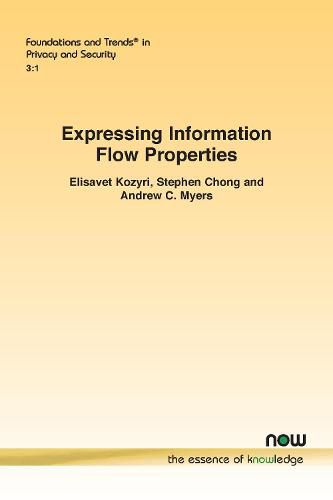Readings Newsletter
Become a Readings Member to make your shopping experience even easier.
Sign in or sign up for free!
You’re not far away from qualifying for FREE standard shipping within Australia
You’ve qualified for FREE standard shipping within Australia
The cart is loading…






This title is printed to order. This book may have been self-published. If so, we cannot guarantee the quality of the content. In the main most books will have gone through the editing process however some may not. We therefore suggest that you be aware of this before ordering this book. If in doubt check either the author or publisher’s details as we are unable to accept any returns unless they are faulty. Please contact us if you have any questions.
With information comes responsibility: a responsibility to use information according to appropriate restrictions. Forced by regulations and public sentiment, technology companies are increasing the transparency of how personal data is used, allowing users to make more fine-grained decisions on how and where their information should flow. Work over the last four decades has led to the term Information flow properties being introduced. These can express complex restrictions on data usage by specifying how sensitive data may flow throughout computation.
In this monograph the authors match the demand of the digital society for expressing complex data-usage restrictions with the supply of information flow properties proposed in the literature. For the first time ever, the authors perform a large-scale systematization of such information flow properties. In doing so, they survey the wide variety of information flow properties that have been formulated within the last four decades, compare their expressive power, and suggest research directions for a faster convergence between future technological demand and literature supply. This concise overview of such a diverse topic provides the reader with an invaluable reference when implementing security technologies into all types of information systems. It is particularly useful for students, researchers and practitioners working on modern day information security problems.
$9.00 standard shipping within Australia
FREE standard shipping within Australia for orders over $100.00
Express & International shipping calculated at checkout
This title is printed to order. This book may have been self-published. If so, we cannot guarantee the quality of the content. In the main most books will have gone through the editing process however some may not. We therefore suggest that you be aware of this before ordering this book. If in doubt check either the author or publisher’s details as we are unable to accept any returns unless they are faulty. Please contact us if you have any questions.
With information comes responsibility: a responsibility to use information according to appropriate restrictions. Forced by regulations and public sentiment, technology companies are increasing the transparency of how personal data is used, allowing users to make more fine-grained decisions on how and where their information should flow. Work over the last four decades has led to the term Information flow properties being introduced. These can express complex restrictions on data usage by specifying how sensitive data may flow throughout computation.
In this monograph the authors match the demand of the digital society for expressing complex data-usage restrictions with the supply of information flow properties proposed in the literature. For the first time ever, the authors perform a large-scale systematization of such information flow properties. In doing so, they survey the wide variety of information flow properties that have been formulated within the last four decades, compare their expressive power, and suggest research directions for a faster convergence between future technological demand and literature supply. This concise overview of such a diverse topic provides the reader with an invaluable reference when implementing security technologies into all types of information systems. It is particularly useful for students, researchers and practitioners working on modern day information security problems.